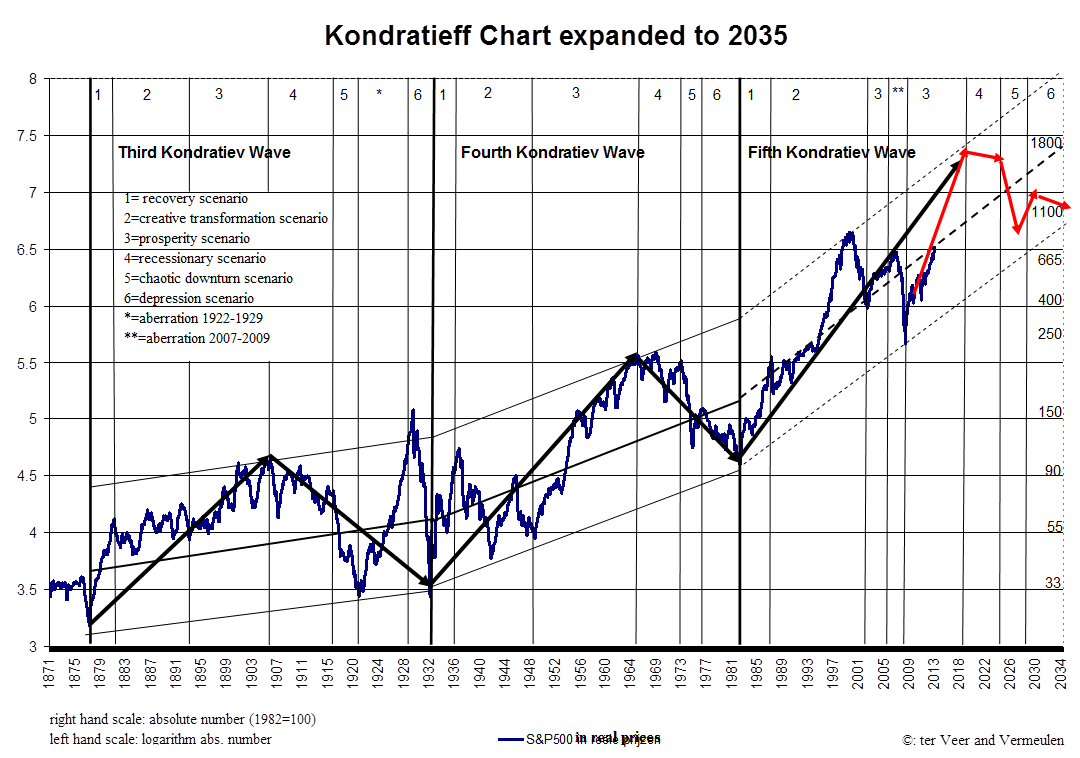Optimistic chart of the S&P500 corrected for inflation on a logarithmic scale (as above in the blog). Since December 2009 (publication of the book with current chart and red arrows) the S&P has followed the trend of the red arrow pretty well, even while the S&P was more often below the red arrow than above (explanation with the four year cycle: until the last upward phase GH arrives the S&P ought to remain a bit below or at the red arrow).
Pessimistic chart of S&P500, with other time scale for the six scenario’s. This is the explanation of the believers in the winter of the Kondratieff wave.
We are pretty near the point where you have to change to a less pessimistic version of the pessimistic chart of the Kondratieff winter.
Even when the optimistic chart should prove to be right it still can last some time before the winter will be expelled. A new correction (the last years happening so often) will revive the belief in the winter.
Above JP Morgans ‘thoughts about the long wave (logarithmic scale but not corrected for inflation). Every 15 to 20 years a new bull market started. The next chart can be some time away because we are now only at the line through the highs of 1906 and 1965.
They give three periods in which equity markets didn’t rise for a long period. What were the main reasons for the bad performance of equities?
1906-1924 correction of high valuations, war, Spanish flu, stagnation of profit growth
1937-1949 austerity government spending/ extreme expansion of government, war, inflation
1966-1982 correction of high valuations, wages rising faster than productivity, inflation, oil crises
2000-2009/12 correction of high valuations, debt crisis, extreme expansion government spending
More in general:
• In every case there was a correction of the valuation of equities (after they had become too expensive)
• There was disappointment that things were not going as good as thought
• There were severe shocks that caused a crash of confidence for a sustained period
• Government took too much of the GDP and the forced austerity afterwards caused slow growth before and after austerity
There is a lot of doubt about the growth of the structural trend. According to most commentators of JPM’s chart the slope should be slower, around zero for the future. Ter Veer and I see the opposite: the trend is going up faster because of high growth in the world (Emerging Markets grow very fast and dominate growth in the world, China alone will soon be bigger than Western Europe in total) and because of structurally higher productivity growth (especially in Emerging Markets and the US) since 1995 because of the ICT Revolution (current application phase shows highest productivity growth). Profit growth will be good in the coming decade because business is more powerful than employees.







